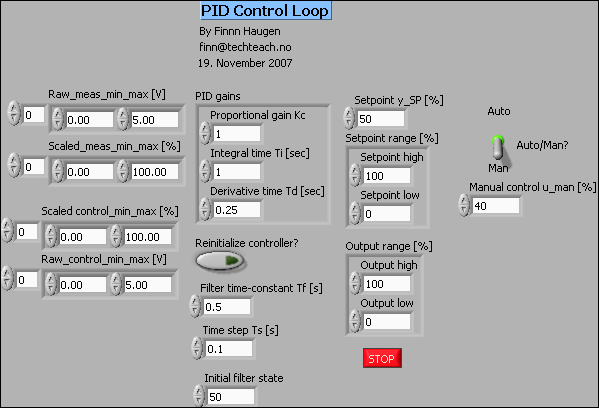
When you adjust the integral gain,, we suggest you to start with a small value since a large can de-stabilize the response. Now adjust both the proportional gain,, and the integral gain,, to obtain the desired response. For now, let equal 600 and equal 1 and see what happens to the response. Recall from the Introduction: PID Controller Design page, an addition of an integral controller to the system eliminates the steady-state error. The closed-loop transfer function of this cruise control system with a PI controller ( ) is: The solution to this problem in this case is to choose a lower proportional gain,, that will give a reasonable rise time, and add an integral controller to eliminate the steady-state error. We will discuss this issue much more in subsequent tutorials. Must always be considered when proposing a new controller. Than 0.5 seconds due to power limitations of the engine and drivetrain.Īctuator limitations are very frequently encountered in practice in control systems engineering, and consequently, the required control action Unrealistic because a real cruise control system generally can not change the speed of the vehicle from 0 to 10 m/s in less The steady-state error is now essentially zero, and the rise time has been reduced substantially. Change the existing m-file so that equals 5000 and rerun it in the MATLAB command window. You can increase the proportional gain,, to reduce the rise time and the steady-state error. As you can see from the plot, neither the steady-stateĮrror nor the rise time satisfy our design criteria. Running the m-file in MATLAB should give you the step response above. With the closed-loop transfer function, T, derived above. Please verify for yourself that the result agrees Note that we have used the MATLAB feedback command to simplify the block diagram reduction of the closed-loop system. Create a new m-file and enter the following commands. Recall from the Introduction: PID Controller Design page, a proportional controller,, decreases the rise time, which is desirable in this case.įor now, use equal to 100 and a reference speed of 10 m/s. The first thing to do in this problem is to find a closed-loop transfer function with a proportional control ( ) added.īy reducing the unity feedback block diagram, the closed-loop transfer function with a proportional controller becomes:

We can define a PID controller in MATLAB using the transfer function directly: Kp = 1 Īlternatively, we may use MATLAB's pid controller object to generate an equivalent continuous time controller as follows:Ĭontinuous-time PID controller in parallel form. Recall from the Introduction: PID Controller Design page, the transfer function of a PID controller is The block diagram of a typical unity feedback system is shown below.


 0 kommentar(er)
0 kommentar(er)
